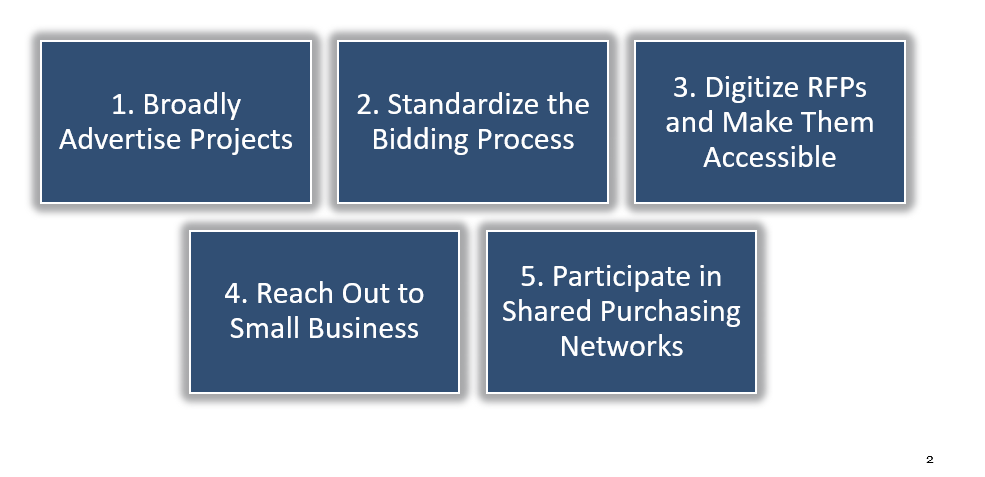In the age of digitization and global pandemic, diversifying supply chains is on the top of every public procurement official’s growing to-do list. The Coronavirus pandemic has turned Central Procurement Officers to local and regional supply chain solutions.
It is not just states looking to ramp-up their small business participation in public contracts. The Congressional Research Service’s Overview of Small Business Contracting states that in FY 2019, the federal government awarded 23.0% of the total value of all small business eligible prime contract awards to small businesses[1]. As testament to this goal in August the U.S. General Services Administration’s Heartland region announced the release of the final solicitation for the 8(a) FAST2 Governmentwide Acquisition Contract (GWAC), meant to aid small businesses in competing in the federal marketplace.
Are you ready for an increase in regionality?
Government Technology.com recently released 5 Ways to Expand Public Contracts to Local Business. These five ways provide an even playing field for small business owners; giving them the edge needed to compete with global, robust, suppliers.

Public Procurement Officials are already in the know.
Public procurement officials are used to proper advertising aligned with their statutes, but do you take it a step further? Try reaching out to your state’s Procurement Technical Assistance Center (PTAC) for help getting your advertisement out there. Does your state have any preferences? How are you promoting to those specific populations? Start by asking questions around how you are reaching your intended audience and you will be able to zero-in on any advertising or outreach gaps.
Standardizing the bidding process, as well as digitizing RFPs and participating in shared purchasing networks, are all components of eProcurement. eProcurement is consistently in NASPO’s annual Top 10 Priorities. In 2020, it came in at number 2. Across the nation, states and public entities have varying ranges of eProcurement capabilities with various levels of functionality. As the world of supply chains moves forward to a post-Coronavirus world, public procurement professionals will keep working towards advancing and advocating for eProcurement systems.
The future is now.
Prior to the Coronavirus pandemic, geopolitical tensions were causing a backlash to the globalization of supply chains. Gone are the days of robust supply chains and sole-source manufacturing. As supply chains are looking to diversify, small businesses will have the opportunity to capitalize on this gap in public contracts. For public procurement officials looking to award contracts, be ready for the shift in focus from globalization to regionality.
[1] Dilger, Robert Jay (2019) An Overview of Small Business Contracting (CRS Report No. R45576). Retrieved from Congressional Research Service Website: https://fas.org/sgp/crs/misc/R45576.pdf
[2] Vaught, B. (2020, August 24). 5 Ways to Open Public Contracts to Local Business. Government Technology. Retrieved August 25, 2020, from https://www.govtech.com/opinion/5-Ways-to-Open-Public-Contracts-to-Local-Business-Contributed.html
